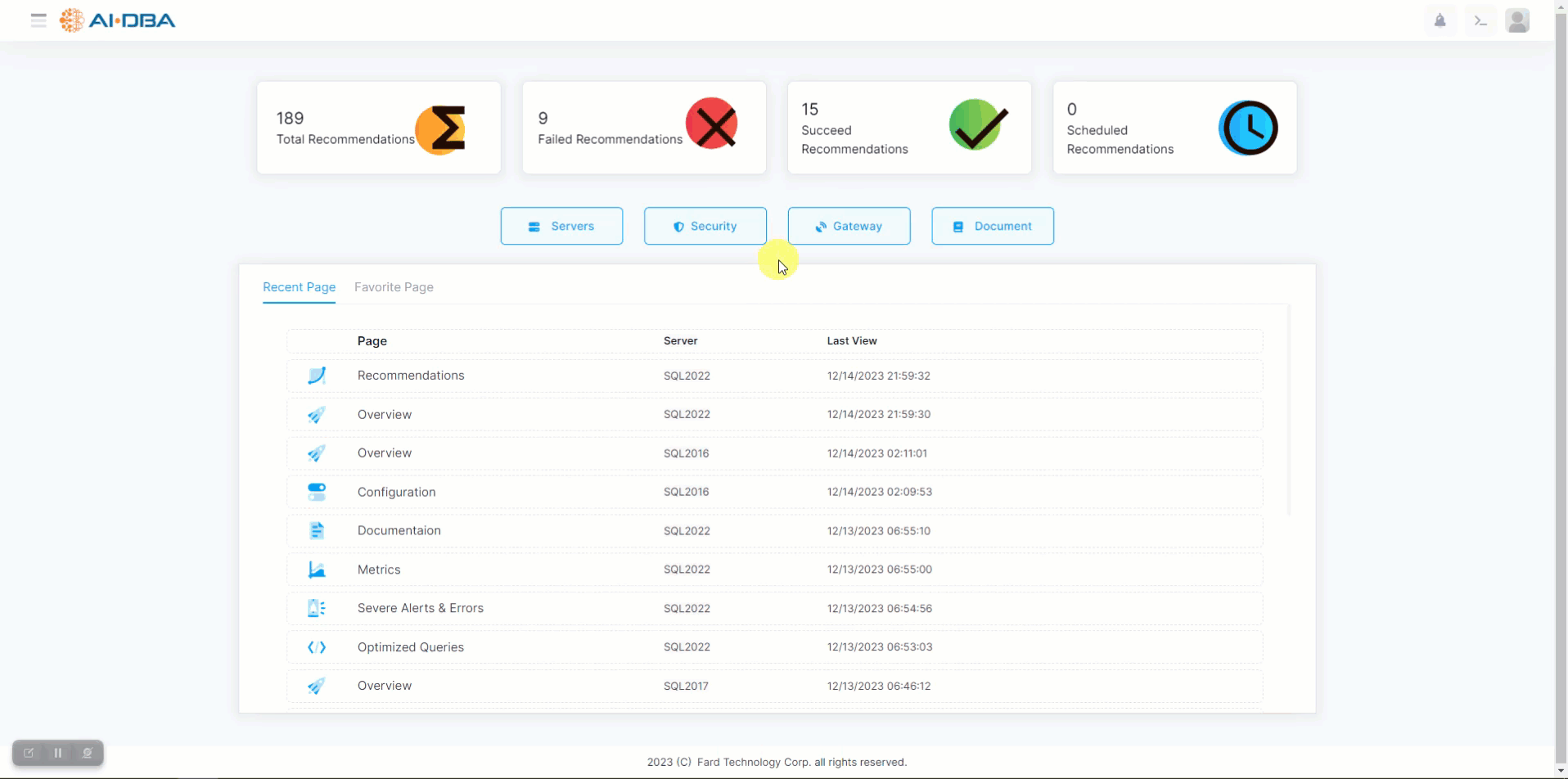This blog is automatically generated by AI-DBA without human revision, please note that errors may occur.
AI-DBA leverages advanced AI algorithms to analyze telemetry data and health check results from your database environment. This analysis allows AI-DBA to generate a set of recommendations aimed at improving various aspects of database management, including performance, security, administration, and maintenance.
By analyzing telemetry data and health check results, AI-DBA gains insights into the specific challenges and areas for improvement within your database environment. The generated recommendations serve as actionable guidance to address these challenges and enhance various aspects of your database management. Implementing these recommendations can lead to improved performance, strengthened security, streamlined administration, and better overall maintenance of your databases.
To execute a recommendation through the AI-DBA portal, follow these steps:
By following these steps, you will be able to execute recommendations generated by AI-DBA based on telemetry data and health check statistics, with the ability to choose the desired scheduling option that best suits your requirements.
